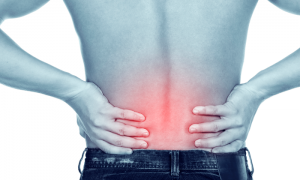Project Description
 Spinal stenosis is the narrowing of the spinal cord canal; a common ailment that compresses the spinal cord or spinal nerve roots. This compression can lead to back and leg pain, cramping of the legs, numbness and tingling, muscle spasms, weakness in the legs preventing comfortable walking and even incontinence (loss of urine control) or paralysis.
Spinal stenosis is the narrowing of the spinal cord canal; a common ailment that compresses the spinal cord or spinal nerve roots. This compression can lead to back and leg pain, cramping of the legs, numbness and tingling, muscle spasms, weakness in the legs preventing comfortable walking and even incontinence (loss of urine control) or paralysis.
The most common area for canal narrowing is within the lumbar vertebrae (lower back). Often, individuals will have symptoms such as numbness and tingling or pain into the legs and feet, cramping into the legs, loss of sexual function and abnormal bowel or bladder function. Other signs may include pain with walking — especially up or down a hill, ramp or stairs — and is often relieved with sitting or leaning forward.
Spinal stenosis in the cervical spine (or neck) is less common but far more dangerous because it involves direct compression of the spinal cord. Spinal stenosis around the spinal cord could lead the above symptoms as well as create radiating pain, weakness or numbness and tingling to the arms and hands, serious body weakness or even lead to partial or complete body paralysis.
Most commonly, spinal stenosis is caused by osteoarthritis — this condition is due to “wear and tear” on our body by repetitive injuries and stresses. The most common cause of osteoarthritis of the spine is lack of motion or misalignment of the vertebrae. Osteoarthritis causes osteophytes (or bone spurs) which narrow the canal, compressing the spinal cord or spinal nerve. Other causes include:
- Poor posture
- Disc herniation
- Tumors or cysts
- Osteophytes or bone spurs
- Previous injury or surgery to the spine (especially if not treated properly)
- Thickened ligaments (ligamentum flavum and posterior longitudinal ligament) that support the vertebrae
Individuals at risk for spinal stenosis include people over age 50 and people who sit for a majority of their time. Additionally, people may be born with a narrow spinal cord canal — although not common, this is very likely to lead to spinal canal stenosis.
While traditional medicine may provide symptomatic relief, it does not always reduce the pressure being applied to the nervous system or prevent progression of the degenerative process. Chiropractic care can help to reduce the pressure on the nerves as well as restore motion and reduce pain levels due to spinal canal stenosis.
Chiropractic care is a safe and effective treatment option for those who are searching for an alternative and natural method. Chiropractic techniques provide relief to symptoms without the side effects of medications or the risks of epidurals or surgery. At Wheaton Healthcare, LLC, we seek to relieve interference on the nervous system in an effective and conservative manner to improve and preserve your health.
At Wheaton Healthcare, Dr. Papuga knows what it takes to help you maintain or get back to good health with chiropractic care. You deserve it. If you have any questions, give us a call at 630.690.4040 or schedule your appointment today.
Recieve a 10% discount on all services. Ask us how.
